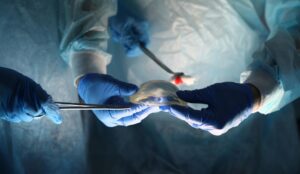The gut microbiome has been one of the most exciting areas of research in recent years, and it's no surprise why. Our understanding of the trillions of microorganisms living in our digestive system has exploded, revealing their profound influence not only on digestive health but also on overall wellness. The gut microbiome affects everything from digestion and immunity to mental health and even chronic diseases. In this blog, we’ll explore what the gut microbiome is, how it functions, and why maintaining a healthy balance is essential for your overall health.
What is the Gut Microbiome?
The gut microbiome refers to the complex ecosystem of microorganisms, including bacteria, viruses, fungi, and other microbes, that reside in the digestive tract. Most of these microorganisms live in the large intestine and play a vital role in various bodily functions.
- Bacteria: The most researched component, particularly in terms of its role in digestion, immunity, and protection against harmful bacteria.
- Viruses & Fungi: Less studied but also play important roles, such as regulating bacterial populations and influencing immunity.
- Diversity: A more diverse microbiome is generally healthier, with a balance between “good” bacteria (like Lactobacillus) and “bad” bacteria kept in check.
Every individual’s gut microbiome is unique, influenced by factors like genetics, diet, environment, medications, and lifestyle. However, despite its uniqueness, certain traits of a healthy gut microbiome are universally beneficial.

How Does the Gut Microbiome Affect Digestive Health?
1. Aiding Digestion and Nutrient Absorption The gut microbiome helps break down complex carbohydrates, fibers, and proteins that our digestive enzymes cannot handle on their own. By fermenting fiber, bacteria in the colon produce short-chain fatty acids (SCFAs), which play a key role in keeping the colon healthy and providing energy to the body.
- Example: Bacteria like Bacteroides and Firmicutes help digest fibers and contribute to the production of essential vitamins like Vitamin K and some B vitamins.
2. Protecting Against Pathogens A healthy microbiome provides a barrier against harmful bacteria by competing for nutrients and space, preventing infections in the gut. This process, known as "colonization resistance," is essential for maintaining the integrity of the gut lining and reducing inflammation.
- Example: Probiotic bacteria, like Lactobacillus and Bifidobacterium, can suppress harmful pathogens like Clostridium difficile, which can cause severe gastrointestinal infections.
3. Influencing Gastrointestinal Disorders Imbalance in the gut microbiome, also called
dysbiosis, can contribute to several gastrointestinal conditions, such as:
- Irritable Bowel Syndrome (IBS): Dysbiosis has been linked to IBS, with symptoms like bloating, diarrhea, and abdominal pain being tied to an imbalance of gut bacteria.
- Inflammatory Bowel Disease (IBD): An imbalance in gut bacteria is thought to trigger immune responses that lead to inflammation in the gut, contributing to conditions like Crohn’s disease and ulcerative colitis.
The Gut Microbiome and the Immune System
About 70% of the body’s immune system resides in the gut, and the microbiome is intimately connected to it. The bacteria in your gut communicate with immune cells, helping to control the body’s response to infections.
- Boosting Immunity: Certain gut bacteria help train the immune system, teaching it to differentiate between harmful invaders and the body’s own tissues, reducing the risk of autoimmune diseases.
- Preventing Inflammation: A healthy gut microbiome keeps the intestinal lining strong and prevents harmful substances from passing into the bloodstream, a phenomenon known as “leaky gut.” When the gut barrier is compromised, inflammation can occur, leading to systemic immune responses.
The Gut-Brain Axis: How the Microbiome Affects Mental Health
The connection between your gut and brain, known as the
gut-brain axis, is another crucial aspect of the microbiome's impact on overall health. This bidirectional communication pathway links emotional and cognitive centers of the brain with peripheral intestinal functions.
- Serotonin Production: About 90% of the body’s serotonin, a neurotransmitter that regulates mood and anxiety, is produced in the gut. Gut bacteria influence serotonin production, affecting mood regulation and potentially playing a role in conditions like depression and anxiety.
- Mental Health Disorders: Studies have shown that imbalances in gut bacteria may be associated with anxiety, depression, and even autism. This has led to research into using probiotics ("psychobiotics") to improve mental health.
The Role of the Gut Microbiome in Metabolism and Weight Management
The composition of your gut microbiome can affect how your body metabolizes food, potentially influencing weight gain, insulin resistance, and obesity. Certain bacteria are more efficient at extracting energy from food, which may contribute to weight gain if these bacteria are overrepresented.
- Weight Gain: Studies have found that people with obesity tend to have lower microbiome diversity and a different ratio of bacterial species, such as an increase in Firmicutes relative to Bacteroidetes.
- Blood Sugar Regulation: A healthy gut microbiome can help regulate blood sugar levels by influencing insulin sensitivity, reducing the risk of type 2 diabetes.

How to Maintain a Healthy Gut Microbiome
Maintaining the right balance in your gut microbiome is crucial for overall health. Here are some proven strategies to promote a healthy gut:
1. Eat a Diverse Range of Foods A varied diet rich in whole foods and fibers promotes microbial diversity, which is essential for a healthy gut. Include fruits, vegetables, whole grains, and legumes in your diet to feed beneficial bacteria.
- Prebiotic Foods: Garlic, onions, asparagus, and bananas contain fibers that nourish beneficial gut bacteria.
2. Incorporate Probiotics Probiotics are live bacteria found in fermented foods and supplements that can improve gut health by restoring the balance of the microbiome.
- Sources of Probiotics: Yogurt, kefir, sauerkraut, kimchi, and miso.
3. Limit Sugary and Processed Foods A diet high in sugar and processed foods can encourage the growth of harmful bacteria and lead to dysbiosis. Reducing the intake of these foods helps maintain a balanced gut microbiome.
4. Exercise Regularly Physical activity has been shown to increase the diversity of the gut microbiome and improve the overall balance of bacteria.
5. Manage Stress Chronic stress can disrupt the gut microbiome and weaken the gut-brain axis. Practices like meditation, yoga, and deep breathing can help reduce stress levels.
6. Avoid Unnecessary Antibiotics While antibiotics are crucial for treating bacterial infections, they also kill beneficial gut bacteria. Use antibiotics only when necessary and consider taking probiotics during and after treatment to help repopulate healthy bacteria.
Conclusion: Your Gut Microbiome is Key to Overall Health
The gut microbiome plays an indispensable role in not only your digestive health but also your immune function, mental well-being, metabolism, and beyond. Keeping your gut bacteria in balance can help prevent a range of health issues and improve your overall quality of life. By following simple lifestyle changes such as eating a varied diet, incorporating probiotics, managing stress, and staying active, you can support a healthy gut microbiome and enjoy the benefits it brings.
 Personalized Care for Lasting Health
Dr. Patel’s holistic approach to treatment includes not only medical interventions but also lifestyle and dietary recommendations that promote long-term health. He believes in educating his patients about their conditions, empowering them to make informed choices about their health.
Patients who work with Dr. Patel benefit from his expertise, empathy, and dedication to providing the highest level of care. For those in Sola, Ahmedabad, looking for a trusted gastroenterologist, Dr. Patel offers a pathway to better digestive health and quality of life.
Personalized Care for Lasting Health
Dr. Patel’s holistic approach to treatment includes not only medical interventions but also lifestyle and dietary recommendations that promote long-term health. He believes in educating his patients about their conditions, empowering them to make informed choices about their health.
Patients who work with Dr. Patel benefit from his expertise, empathy, and dedication to providing the highest level of care. For those in Sola, Ahmedabad, looking for a trusted gastroenterologist, Dr. Patel offers a pathway to better digestive health and quality of life. Personalized Care for Lasting Health
Dr. Patel’s holistic approach to treatment includes not only medical interventions but also lifestyle and dietary recommendations that promote long-term health. He believes in educating his patients about their conditions, empowering them to make informed choices about their health.
Patients who work with Dr. Patel benefit from his expertise, empathy, and dedication to providing the highest level of care. For those in Sola, Ahmedabad, looking for a trusted gastroenterologist, Dr. Patel offers a pathway to better digestive health and quality of life.
Personalized Care for Lasting Health
Dr. Patel’s holistic approach to treatment includes not only medical interventions but also lifestyle and dietary recommendations that promote long-term health. He believes in educating his patients about their conditions, empowering them to make informed choices about their health.
Patients who work with Dr. Patel benefit from his expertise, empathy, and dedication to providing the highest level of care. For those in Sola, Ahmedabad, looking for a trusted gastroenterologist, Dr. Patel offers a pathway to better digestive health and quality of life.


 The Patient Experience with Dr. Patel
Patients appreciate Dr. Patel’s clear communication and empathy, which are essential when undergoing surgery. From the initial consultation to post-surgery follow-ups, Dr. Patel ensures that each patient understands their treatment plan and feels confident in their care. This dedication to patient well-being is why Dr. Patel stands out as the best choice for hernia treatment in Ahmedabad.
If you’re experiencing hernia symptoms and looking for reliable, compassionate care, schedule a consultation with Dr. Patel today to discuss how he can help you on your path to recovery.
The Patient Experience with Dr. Patel
Patients appreciate Dr. Patel’s clear communication and empathy, which are essential when undergoing surgery. From the initial consultation to post-surgery follow-ups, Dr. Patel ensures that each patient understands their treatment plan and feels confident in their care. This dedication to patient well-being is why Dr. Patel stands out as the best choice for hernia treatment in Ahmedabad.
If you’re experiencing hernia symptoms and looking for reliable, compassionate care, schedule a consultation with Dr. Patel today to discuss how he can help you on your path to recovery.
 Dr. Patel’s Approach to Hernia Surgery
Dr. Hamikchandra Patel specializes in minimally invasive hernia surgery, using laparoscopic techniques to repair the hernia with minimal incisions. This approach reduces recovery time, minimizes pain, and lowers the risk of infection. Dr. Patel also offers comprehensive pre- and post-operative care, ensuring that his patients feel supported and informed every step of the way.
For those seeking relief from hernia pain, Dr. Patel’s combination of surgical skill and compassionate care makes him one of the most trusted hernia surgeons in Sola, Ahmedabad. Book a consultation with Dr. Patel to explore your treatment options.
Dr. Patel’s Approach to Hernia Surgery
Dr. Hamikchandra Patel specializes in minimally invasive hernia surgery, using laparoscopic techniques to repair the hernia with minimal incisions. This approach reduces recovery time, minimizes pain, and lowers the risk of infection. Dr. Patel also offers comprehensive pre- and post-operative care, ensuring that his patients feel supported and informed every step of the way.
For those seeking relief from hernia pain, Dr. Patel’s combination of surgical skill and compassionate care makes him one of the most trusted hernia surgeons in Sola, Ahmedabad. Book a consultation with Dr. Patel to explore your treatment options.



















